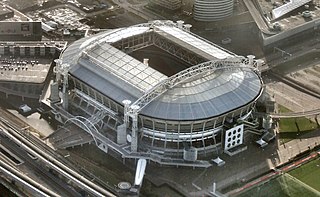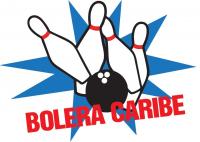A location is a fixed geographical point.
Facility management or facilities management (FM) is a professional management discipline focused on the efficient and effective delivery of logistics and other support services related to real property and buildings. It encompasses multiple disciplines to ensure functionality, comfort, safety and efficiency of the built environment by integrating people, place, process and technology, as defined by the International Organization for Standardization (ISO). The profession is certified through Global Facility Management Association member organizations.

Half-Life: Blue Shift is an expansion pack for the first-person shooter video game Half-Life (1998). It was developed by Gearbox Software and published by Sierra On-Line. Blue Shift was the second expansion for Half-Life, originally intended as part of a Dreamcast port of Half-Life. Although the Dreamcast port was cancelled, the Windows version was released as a standalone product on June 12, 2001 for Windows. It was released on Steam on August 24, 2005.

Half-Life: Decay is a multiplayer-only expansion pack for Valve's first-person shooter Half-Life. Developed by Gearbox Software and published by Sierra On-Line, Decay was released as part of the PlayStation 2 version of Half-Life in 2001. It is the third expansion pack for Half-Life, and like its predecessors, Decay returns to the setting and timeline of the original story, albeit portraying the story from the viewpoint of a different set of protagonists: two female scientists working in the Black Mesa Research Facility. Decay is a cooperative multiplayer game, designed to be played by two people working together to pass through the game's levels.

A transport network, or transportation network, is a network or graph in geographic space, describing an infrastructure that permits and constrains movement or flow. Examples include but are not limited to road networks, railways, air routes, pipelines, aqueducts, and power lines. The digital representation of these networks, and the methods for their analysis, is a core part of spatial analysis, geographic information systems, public utilities, and transport engineering. Network analysis is an application of the theories and algorithms of graph theory and is a form of proximity analysis.

A retractable roof is a roof system designed to roll back the roof of a structure so that the interior of the facility is open to the outdoors. Retractable roofs are sometimes referred to as operable roofs or retractable skylights. The term operable skylight, while quite similar, refers to a skylight that opens on a hinge, rather than on a track.

A bus garage, also known as a bus depot, bus base or bus barn, is a facility where buses are stored and maintained. In many conurbations, bus garages are on the site of former car barns or tram sheds, where trams (streetcars) were stored, and the operation transferred to buses. In other areas, garages were built to replace horsebus yards or on virgin sites when populations were not as high as now.
The study of facility location problems (FLP), also known as location analysis, is a branch of operations research and computational geometry concerned with the optimal placement of facilities to minimize transportation costs while considering factors like avoiding placing hazardous materials near housing, and competitors' facilities. The techniques also apply to cluster analysis.
The Facility Registry System (FRS) is a centrally managed Environmental Protection Agency (EPA) database that identifies facilities, sites or places of environmental interest in the United States.
The Half-Life video game series features many locations set in a dystopian future stemming from the events of the first game, Half-Life. These locations are used and referred to throughout the series. The locations, for the most part, are designed and modeled from real-world equivalent locations in Eastern Europe, but also include science fiction settings including the Black Mesa Research Facility, a labyrinthine subterranean research complex, and Xen, an alien dimension.
Diver detection sonar (DDS) systems are sonar and acoustic location systems employed underwater for the detection of divers and submerged swimmer delivery vehicles (SDVs). The purpose of this type of sonar system is to provide detection, tracking and classification information on underwater threats that could endanger property and lives. Further, this information is useful only to the extent that it is made available to authorities in time to make possible the desired response to the threat, be it deterrent or defensive action. Subsurface threats are a difficult problem, because reliable detection is available to date chiefly by use of high-resolution active sonar or trained dolphins or sea lions. The threat of an underwater terrorist attack is a concern to the maritime industry and port law enforcement agencies. Ports face a range of threats from swimmers, boat-delivered ordnance such as limpet mines and other forms of improvised underwater explosive devices. DDS systems have been developed to provide underwater security for ports, coastal facilities, offshore installations, pipelines and ships. Due to the variety of life and objects that exist under the water, it is desirable that a DDS system be capable of distinguishing between large sea mammals, shoals of fish; a ship's wake; a diver with an open circuit scuba set and a stealth diver with a rebreather. DDS systems have been developed that can be mounted on the seabed, on a pier or on the hull of a vessel. For complete port security these systems are integrated with the surface surveillance and security systems employed at ports, coastal facilities and offshore installations. Various systems provide specialized features to facilitate their use in port security systems including automatic detection features.

A health facility is, in general, any location where healthcare is provided. Health facilities range from small clinics and doctor's offices to urgent care centers and large hospitals with elaborate emergency rooms and trauma centers. The number and quality of health facilities in a country or region is one common measure of that area's prosperity and quality of life. In many countries, health facilities are regulated to some extent by law; licensing by a regulatory agency is often required before a facility may open for business. Health facilities may be owned and operated by for-profit businesses, non-profit organizations, governments, and in some cases by individuals, with proportions varying by country. See also the recent review paper,

Turf Battles, often referred to as TB, is a massively multiplayer online role-playing game (MMORPG). It is IMAZIC's first released game first introduced in 2002. Turf Battles takes place within the world of Fomalhaut, years after a major war. Originally published under HyperEngines LLC, The open beta was announced around September 2005. Due to many technical issues, the game ultimately failed, and Hyper Engines LLC closed its operations mid-2008.

The Cardiff Locomotive Workshops is a rail yard and rolling stock facility located between Cockle Creek and Cardiff stations near Newcastle, on the Main North railway line in New South Wales, Australia.

Bolera Caribe is a bowling center located in barrio Coto Laurel in the municipality of Ponce, Puerto Rico, where bowling competitions for the 2010 Central American and Caribbean Games (CACG) were held. The venue is located at the intersection of PR-506 and PR-52. The Center is owned by Bolera Caribe, Inc., a private company. The bowling center was inaugurated in November 2004.
The idea of regulatory crime control is to reduce and control crime. Many factors can make a place or area a victim of criminal activity. John and Emily Eck, two primary scholars that work within the area of regulatory crime control, explain how places can either create crime opportunities or crime barriers (2012). Eck also defines the two types of regulatory crime control strategies as ends-based and means-based. He states that means-based strategies focus on the use of different procedures and technologies, while ends-based strategies concentrate on the overall outcome (2012). Another primary scholar, Graham Farrell, discusses how repeat victimisation is becoming an important area for policing and crime control.

A sex drive-in or sex box is a car garage that is designed to allow prostitution to take place using cars, and can be found in a few countries in Europe. Generally the facilities are created by local authorities to put some control on where prostitution occurs and to provide increased safety.
Facility location is a name given to several different problems in computer science and in game theory:
Gigafactory is a generic term that refers to a manufacturing facility where components and products associated with electrification and decarbonization technologies are produced.
The competitive facility location game is a kind of competitive game in which service-providers select locations to place their facilities in order to maximize their profits. The game has the following components:









